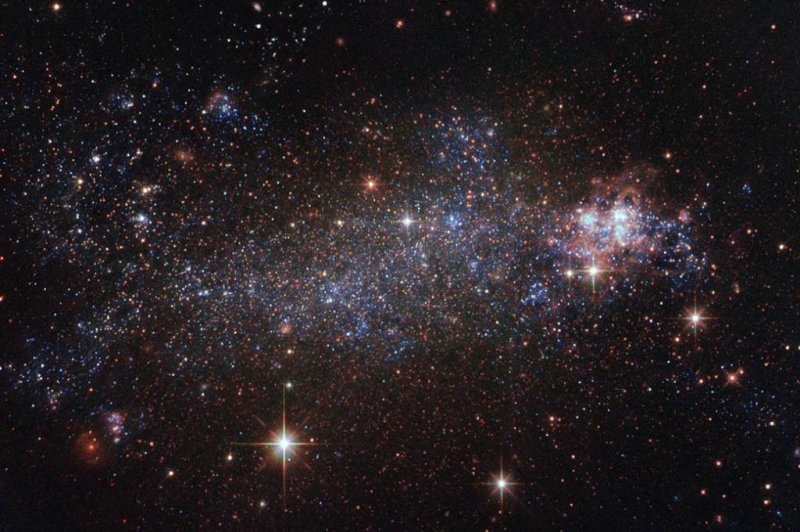WASHINGTON, Jan. 25 (UPI) -- The majority of galaxies have some level of symmetry to them. Many are spirals, like the Milky Way.
But some 25 percent look like a toddler's finger painting -- unbalanced, seemingly sporadic in their organization. They're called irregular galaxies, and their unpredictable appearance sometimes makes them hard to identify.















